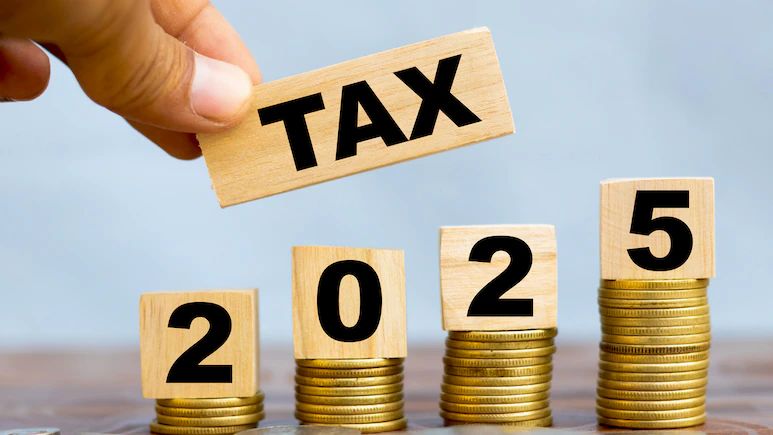Gold ETF vs Physical Gold 2025 – Which is Better?
Gold ETF vs Physical Gold 2025 – Which is Better? In 2025, gold continues to be one of the most trusted and widely used investment options in India. However, the debate between gold ETF vs physical gold 2025 is more relevant than ever. While physical gold has cultural and traditional value, gold investment types like Exchange-Traded Funds (ETFs) offer convenience, transparency, and cost efficiency. Both investment forms have their own benefits and drawbacks. The right choice depends on factors such as investment goals, liquidity needs, and risk tolerance. Understanding Gold ETFs A gold ETF is a financial instrument that tracks the market price of gold and is traded on stock exchanges like shares. Instead of holding gold in physical form, investors own units representing a certain quantity of gold. Key Features of Gold ETFs: Traded like stocks on exchanges. Backed by gold of 99.5% purity or higher. Stored securely by fund custodians, eliminating storage risks. Requires a Demat account for trading. For investors looking at gold investment without the hassles of storage and safety, ETFs are a convenient choice. Understanding Physical Gold Physical gold includes coins, bars, and jewellery purchased from jewellers, banks, or authorised dealers. It has cultural importance in India, often associated with weddings, festivals, and gifting. Key Features of Physical Gold: Tangible asset with sentimental value. Available in various forms and weights. Can be pledged for loans. Immediate ownership without a trading account. While physical gold satisfies emotional and cultural needs, it involves additional costs and risks. Comparing Gold ETF vs Physical Gold in 2025 Here’s a detailed comparison of these two gold investment types: Feature Gold ETF Physical Gold Liquidity High – Can be sold anytime on exchanges Medium – Selling may take time Purity Assurance Guaranteed (99.5%+) Varies depending on source Storage & Security No storage required Needs secure storage, risk of theft Additional Costs Low – Brokerage and expense ratio Making charges, GST, storage cost Minimum Investment 1 unit (~1 gram of gold) Usually higher Taxation Similar for both; capital gains rules apply Similar for both; capital gains rules apply Emotional Value None High cultural significance From a purely financial perspective, gold ETFs are often more efficient, while physical gold appeals for cultural and personal reasons. Pros and Cons of Gold ETFs Pros: Easy to buy/sell through Demat and trading accounts. No making charges or risk of impurity. Transparent pricing. Cons: Requires Demat account and internet access. No physical possession, which some investors prefer. Pros and Cons of Physical Gold Pros: Tangible asset with sentimental value. Can be used for personal purposes like jewellery. Acceptable as collateral for loans. Cons: Making charges and GST increase costs. Risk of theft and storage challenges. Purity issues if not purchased from trusted sources. Which Should You Choose in 2025? For purely investment purposes, gold ETFs often make more sense due to lower costs, ease of trade, and guaranteed purity. However, for those valuing tradition and the ability to use gold for personal or ceremonial purposes, physical gold remains the preferred choice. A balanced portfolio could include both — gold ETFs for returns and liquidity, and physical gold for cultural and emergency use. Final Thoughts The gold ETF vs physical gold 2025 debate doesn’t have a one-size-fits-all answer. If convenience, transparency, and low costs are your priority, gold ETFs are the better option. If cultural value and personal possession matter more, physical gold is unmatched. For many Indian investors, the ideal strategy is to combine both forms based on individual goals. FAQs What is the main difference between gold ETFs and physical gold? Gold ETFs are traded electronically and backed by gold of 99.5% purity or higher, while physical gold is a tangible asset. Are gold ETFs better than physical gold for investment? For purely financial purposes, gold ETFs are often better due to lower costs and easier liquidity. Do I need a Demat account for gold ETFs? Yes, a Demat and trading account are required to invest in gold ETFs. Can physical gold give better returns than ETFs? Returns are linked to gold prices in both cases, but physical gold may involve higher costs due to making charges and GST. Which is safer, gold ETFs or physical gold? Gold ETFs are safer from theft risk, while physical gold requires secure storage. Courtesy to aanchal, from where I have extracted this content and is in sync with my investment strategy.
CBDT raises cost inflation index to ease capital gains tax burden
The Central Board of Direct Taxes (CBDT) has revised a crucial metric employed to determine the inflation-adjusted purchase price of assets, thereby facilitating sellers to claim enhanced tax relief during asset sales. An official notification indicated that the cost inflation index (CII), utilised to neutralise the impact of inflation on asset prices, has been elevated to 376 from the preceding 363. A higher index augments the inflation-adjusted purchase price of an asset, consequently reducing the taxable capital gains. Capital gain is calculated as the difference between the sale price and the indexed purchase price, incorporating the cost of improvements. The revised index applies to the current financial year (FY26) and the corresponding assessment year 2026-27 and beyond. However, the scope of indexation benefits has been restricted. The Finance Act of 2024 restructured capital gains tax provisions as part of the government’s broader initiative to simplify the tax system. Under the revised regulations, indexation benefits are broadly applicable for assets sold prior to July 23, 2024. A grandfathering provision enables resident individuals and Hindu Undivided Families (HUFs) to continue claiming indexation even on sales made after this date, provided the asset was acquired before July 23, 2024. In such instances, they have the option to pay LTCG tax at 20% with indexation, rather than the newly implemented flat 12.5% rate without indexation. This option, however, is not available to non-resident Indians, companies, or limited liability partnerships. The concept of indexation employing the CII was removed from the Finance Act 2024. Consequently, after July 23, 2024, none of the assets are eligible for CII benefit. Nevertheless, a choice was provided to taxpayers in the event of the sale of land and building that was acquired prior to July 23, 2024. In such cases, taxpayers have the option to pay tax at 12.5% without indexation or 20% with indexation. Therefore, the revised CII of 376 is beneficial for taxpayers who intend to sell the land and building pertaining to the period before July 23, 2024.
ITR Filing for FY 25 – Important Changes
The due date for filing returns for individuals, not liable to audit for financial year ending is 31st March 2025, is July 31, 2025. Read more for important changes in ITR this year.
BluSmart bondholder saga and way ahead
Gensol Engineering and BluSmart have common promoters – Anmol and Puneet Singh Jaggi. Blusmart Mobility, the ride-hailing platform, and Gensol Engineering share the same promoters, but the two companies’ relationship is deeper than that. Blusmart has a 6,000-strong fleet. Nearly two-thirds of it is leased from Gensol and accounts for over half of Gensol’s assets under management in leasing. The leasing agreement between the two companies helps Blusmart pay less than what other customers have to, thereby putting Gensol’s minority shareholders at a disadvantage. As per Gensol’s annual reports, the transactions with Bluesmart were at “arm’s length” but it appears that wasn’t the case. Neither did Gensol seek shareholders’ nod for these pacts or disclose the term. Over the past year, multiple new-age fintech platforms facilitated the sale of nearly Rs 100 crore worth of BluSmart Mobility bonds to retail investors and high net-worth individuals (HNIs), offering a coupon rate of around 12%. While the term sheet and deed of hypothecation says investment in bonds is secured, by BluSmart’s EV fleet, this security is only valid if Blusmart legally owns those vehicle. But if the vehicles where bought under another group companies that means the security banking the NCD may not be enforceable at all. In this case it turned out that vehicles were bought by Gensol, which were hypothecated by Gensol to lenders and leased to Blusmart. Debt platform Yubi, wealth management startup Centricity and revenue-based financing startup Klub are among fintechs that syndicated BluSmart’s debt instruments to retail investors and HNIs, according to documents sourced from the Ministry of Corporate Affairs (MCA). BluSmart sold bonds worth around Rs 62 crore to Yubi while Centricity and Klub acquired bonds worth Rs 2.5 crore and Rs 8 crore, respectively, as per regulatory filings. In June 2024, there were complaints made to Sebi. The brokers were selling these bonds to the retail investors and HNIs till recently. So, due diligence is in question – said an investor who is holding a significant amount of BluSmart bonds. According to interim SEBI order, of the Rs. 978 crore loaned to Gensol Engineering to buy EV for BluSmart, the Jaggi brothers used Rs. 262 crore for personal expenses. In the case of default, bonds holders BluSmart are now in the same situation as lenders like Power Finance Corporation (PFC) and Indian Renewable Energy Development Agency (IREDA). Following point need to be considered and evaluated (covered in Part B below): What is the company background? Clues on issue unfolding in company operations Industry views and Way ahead expected Only time could tell if Gensol and Blusmart can turn things around. And if there’s one thing market participants even for bondholders, can take away from this, it’s that when numbers and narratives don’t align, caution is key. Part B Background of Gensol Engineering and Blusmart Gensol went public in 2019 through an SME IPO. And working in renewable energy and EV mobility, two fast-growing sectors, meant that there was a lot of excitement around it. The IPO saw good demand, the stock price soared, profits grew and by 2023, it had moved to the NSE and BSE main platforms. Add to it the fact that the company had a solid order book, rising revenues and big expansion plans, and Gensol looked like a great investment. Two companies—Blusmart Mobility Pvt. Ltd and Gensol Engineering Ltd.—are more closely intertwined than is immediately apparent. Co-founded by Jaggi and his brother Puneet, along with Punit Goyal in 2019, Blusmart was among the earliest ride-hailing companies in India to take on Uber and Ola with an all-electric fleet. Backed by the venture-capital arm of energy giant BP, Blusmart was valued at US$134 million in April 2023. The biggest car supplier for Blusmart, though, is Gensol itself—accounting for two-thirds of its fleet. And Blusmart is Gensol’s largest customer in the leasing business by a distance. In other words, the relationship between the two has served them both well. But the leasing arrangement seems to favour Blusmart at the expense of Gensol’s minority shareholders. Clues on issue unfolding in company operations Something wasn’t quite adding up beneath the surface. And it all started bubbling up when two ratings agencies, ICRA and Care Ratings, recently downgraded its credit ratings. First up is the fact that Gensol has huge debts to pay – about ₹1,146 crores. Compare this to its reserves and equity of ₹589 crores and you get a debt-to-equity ratio of about 2x (a sign of financial stress). The bigger problem? It’s struggling to pay back its loans (which means troubles in cash flows). Even murkier? GEL has been telling rating agencies that all debts are being paid on time. So think about it – if a company starts doctoring its paperwork to appear financially stable, it raises big questions about what else could be hidden. It throws the governance and credibility in question. And when lenders and banks lose trust, funding dries up quickly. 1. Credit rating downgrade In early March, two credit rating agencies – Care Ratings and ICRA – downgraded Gensol’s ratings. Care Ratings downgraded long-term and short-term bank facilities from BB+ (Stable) to D and ICRA downgraded long and short term loan from BBB- (Stable) to D. The “D” rating stands for default status. The probe showed the first instance of default by Gensol on December 31, 2024, even as the company submitted statements to the CRAs certifying there was no delay or default in servicing any loans. Gensol had concealed facts regarding its debt servicing track record. Delays in servicing debt to Blusmart bondholders and a rise in share pledge, were the red flags. 2. Drop in promoters holding and increase in promotor holding pledge A sharp fall in promoter holding in Gensol to 35% as of March 31, 2025. This is nearly half of the 62.65% stake promoters, Anmol Singh Jaggi and Puneet Singh Jaggi, held at the end of December 31, 2024. The promoter holding has come down while the debt in the company has risen substantially from Nil in FY17 to ₹1,045 crore in the



